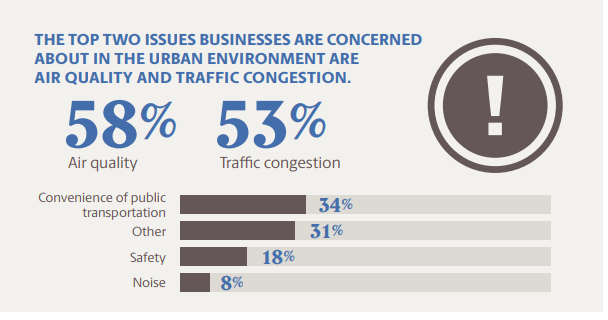
To test the feasibility of collecting air quality data on a hyperlocal scale, EDF teamed up with partners for a pilot project that turned Google Street View cars in Oakland, California into mobile air quality monitors. These cars were equipped with a sensor platform that measured black carbon, nitric oxide, and nitrogen dioxide some of the most harmful kinds of air pollutants.
The results from this ambitious effort were revealed earlier this year. The pilot showed that air quality can vary tremendously even within one city block, and that scientists may be able to pinpoint hotspots where air pollution is far worse than previously understood.
Field-tested experience with sensors
Novel sensor technologies, deployed in coordination with companies and municipalities, have also helped inform environmental action beyond Oakland:

- The Methane Detectors Challenge, a groundbreaking partnership between EDF, oil and gas companies, technology developers and other experts catalyzed the development and deployment of stationary, continuous methane monitors that can prevent the loss of valuable product for the oil and gas industry and reduce pollution. Today, Shell, Statoil and PG&E are all conducting demonstration projects to test out the next-generation of methane sensors.
- EDF’s rapid-response air quality mapping in Houston’s Manchester neighborhood after Hurricane Harvey revealed a plume of cancer-causing benzene that far surpassed health-based guidelines set by most other states. This information, made possible by a partnership with Entanglement Technologies, provided the most robust monitoring of air quality post-Harvey.
- EDF also worked with New Jersey’s largest gas utility and again with Google to survey methane leaks in the underground gas lines. This information should help the utility reduce emissions by more than two-thirds while reducing the need for pipe replacements by 1/3.
These and other sensor technologies hold tremendous potential for finding and measuring invisible pollutants that harm our health and change the climate. However, scaling the creation of hyperlocal insights to inform solutions may require help from corporate fleets and city governments.
Embrace the sensor revolution
What if Houston residents could have learned of the benzene risk even faster, from the delivery vans, garbage trucks, buses and taxis already on their streets?
Vehicles and corporate fleets that are the lifeblood of urban areas could become a community’s mobile air quality monitoring system, thereby helping to inform tailored air quality solutions.
For example cities could relocate ambulances to be closer to anticipated heart attacks on bad air pollution days. Oakland has already examined air quality insights gathered from the mapping project to aid in planning decisions. Oakland community groups are also employing better data to understand their environment and inform advocacy efforts.
Diving into innovation
There are still tough questions to be answered if our effort to turn air quality data into impact is to succeed, including sensor performance over time, impact of viable drive patterns, minimum data quality needed for acquiring actionable insights, and how to combine low-cost stationary and mobile sensors.
The best way to answer these questions is to employ the rapid iteration strategies perfected in Silicon Valley and elsewhere. (Another conclusion of the UPS/GreenBiz survey: test solutions in advance of full scale deployment.)
Advances in sensing technologies may be new, but EDF knows that business partnerships, when combined with scientific expertise, can turn raw data into action and bring innovative solutions to scale around the world.
Follow Aileen on Twitter, @aileennow
Related article: Methane to Its Madness by Fast Company

